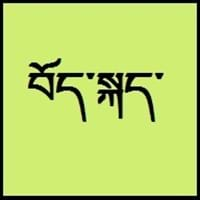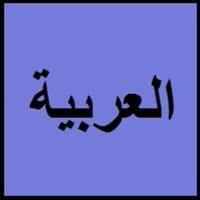Countries
China, Nepal
Algeria, Bahrain, Chad, Comoros, Djibouti, Egypt, Eritrea, Iraq, Israel, Jordan, Kuwait, Lebanon, Libya, Mauritania, Morocco, Oman, Qatar, Saudi Arabia, Somalia, Sudan, Tunisia, United Arab Emirates, Yemen
National Language
Nepal, Tibet
Algeria, Bahrain, Comoros, Djibouti, Egypt, Jordan, Kuwait, Lebanon, Libya, Mauritania, Morocco, Oman, Palestine, Qatar, Saudi Arabia, Somalia, Sudan, Syria, United Arab Emirates, Yemen
Second Language
Not spoken in any of the countries
Not spoken in any of the countries
Speaking Continents
Asia
Africa, Asia
Minority Language
China, India, Nepal
Not spoken in any of the countries
Regulated By
Committee for the Standardisation of the Tibetan Language
Academy of the Arabic Language, Arabic Language International Council
Interesting Facts
- Tibetan dialects vary alot, so it's difficult for tibetans to understand each other if they are not from same area.
- Tibetan is tonal with six tones in all: short low, long low, high falling, low falling, short high, long high.
- Arabic is 5th common language in world.
- Classical Arabic is the language of Quran and also it is official language. Classical Arabic is the only way to learn Arabic language in academic way and it does not change.
Similar To
Not Available
Amharic and Hebrew
Derived From
Not Available
Not Available
Alphabets in
Tibetan-Alphabets.jpg#200
Arabic.jpg#200
Scripts
Tibetan alphabet, Tibetan Braille
Arabic
Writing Direction
Left-To-Right, Horizontal
Right-To-Left, Horizontal
Hello
བཀྲ་ཤིས་བདེ་ལེགས། (tashi delek)
مرحبا
Thank You
ཐུགས་རྗེ་ཆེ་། (tujay-chay)
شكرا
How Are You?
ཁྱེད་རང་སྐུ་གཇུགས་བདེ་པོ་ཡིན་པས།
(kayrang kusu debo yimbay?)
كيف حالك؟
Good Night
གཟིམ་ལཇག་གནང་དགོས་། (sim-jah nahng-go)
تصبح على خير
Good Evening
དགོང་དྲོ་བདེ་ལེགས།
مساء الخير
Good Afternoon
ཉིན་གུང་བདེ་ལེགས།
مساء الخير
Good Morning
སྔ་དྲོ་བདེ་ལེགས། (nga-to delek)
صباح الخير
Please
thu-je zig / ku-chee.
من فضلك
Sorry
ཀོང་དགས་། (gawn-da)
آسف
Bye
ག་ལེར་ཕེབས་། (kha-leh phe)
وداعا
I Love You
ང་ཁྱེད་རང་ལ་དགའ་པོ་ཡོད་ (nga kayrâng-la gawpo yö)
أحبك
Excuse Me
དགོངས་དག བཟོད་དུ་གསོལ། ཐུགས་རྗེ་གཟིགས།
اعذرني
Dialect 1
Central Tibetan
Maghrebi
Where They Speak
China, India, Nepal
Algeria, Libya, Maghreb, Morocco, Tunisia
How Many People Speak
Not Available
Dialect 2
Khams Tibetan
Sudanese
Where They Speak
Bhutan, China
Sudan
Dialect 3
Amdo Tibetan
Levantine
Where They Speak
China
Cyprus, Levant
Speaking Population
Not Available
Second Language Speakers
Not Available
Native Name
བོད་སྐད་ (pö-gay)
(al arabiya) العربية
Alternative Names
Bhotia, Dbus, Dbusgtsang, Phoke, Tibetan, U, Wei, Weizang, Zang
Al-’Arabiyya, Al-Fusha, Literary Arabic
French Name
tibétain
arabe
German Name
Tibetisch
Arabisch
Pronunciation
Not Available
/al ʕarabijja/, /ʕarabi/
Ethnicity
tibetan people
Arabs
Language Family
Sino-Tibetan Family
Afro-Asiatic Family, Semitic Family
Subgroup
Tibeto-Burman
Semitic
Branch
Not Available
North Arabic
Early Forms
Old Tibetan, Classical Tibetan
No early forms
Standard Forms
Standard Tibetan
Modern Standard Arabic
Language Position
Not Available
Signed Forms
Tibetan Sign Language
Signed Arabic
Scope
Not Available
Macrolanguage
ISO 639 6
Not Available
Not Available
Glottocode
tibe1272
arab1395
Linguasphere
No data Available
12-AAC
Language Type
Not Available
Living
Language Linguistic Typology
Not Available
Subject-Verb-Object
Language Morphological Typology
Not Available
Fusional, Synthetic
Tibetan and Arabic Speaking population
Tibetan and Arabic speaking population is one of the factors based on which Tibetan and Arabic languages can be compared. The total count of Tibetan and Arabic Speaking population in percentage is also given. The percentage of people speaking Tibetan language is Not Available whereas the percentage of people speaking Arabic language is 4.43 %. When we compare the speaking population of any two languages we get to know which of two languages is more popular. Find more details about how many people speak Tibetan and Arabic on Tibetan vs Arabic where you will get native speakers, speaking population in percentage and native names.
Tibetan and Arabic Language Codes
Tibetan and Arabic language codes are used in those applications where using language names are tedious. Tibetan and Arabic Language Codes include all the international language codes, glottocodes and linguasphere.





